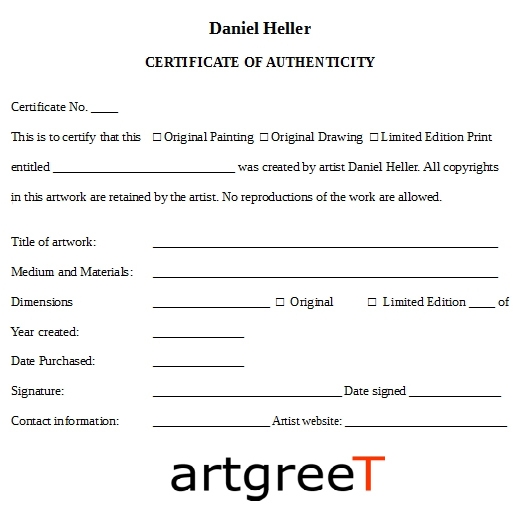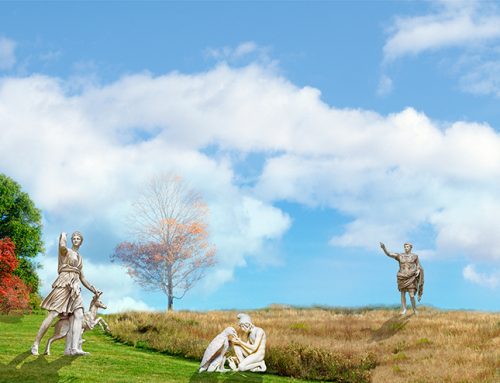
Certificate of Authenticity COA is an important document that any art collector should demand when purchasing artworks. Artists use this type of document (COA) to provide information about their artworks and as proof that the work is genuine. In the world of fine art, a piece accompanied by a COA is one that is made by a professional, practicing art-maker, making a clear distinction from amateur work and attributing a potential collectible value to it. The certificate is provided with the work at the time of sale. It serves as the only reliable sales receipt. It includes an important detailed description of the artwork, thus proving authenticity. The COA adds to buyer confidence in the buying process. And it is a document that the art collector can use to prove authenticity when the time comes to sell the artwork. The added layer of perceived value and trust for an artist makes it easier to sell the artwork.
Certificate of Authenticity (COA) types
Most of the time, the COA is provided by the artist. This is best. However, a COA can also be generated by a dealer, gallery, agent or the publisher/printmaker when limited editions are produced. For single original pieces, the COA content is straightforward. For limited editions, it is a bit more complex. When dealing with an online art gallery, buyers should always ask for a COA.
COA for prints
The COA should state if the print is “limited edition” or “open edition”. For prints or artworks that come within an edition, the COA should include the number of that particular print within the edition and the edition size. The document should also provide information on the number of prints and proofs within that are signed and numbered, only signed or only numbered; whether the edition is a restrike or posthumous; whether it is a part of a series of editions, such as artist proof, press proof, transfer etc.; the status of the plate or master, such as whether it is destroyed or on file – if the master has been destroyed, the edition truly is limited; and so on. If the printmaker is not the artist themselves, their signature should be present as well.
COA details
Certificates come in many flavors. At this point in time, there are no rules or regulations that stipulate that artists have to provide certificates of authenticity as part of the sale. Most of the time, a COA includes the following information:
Certificate Number, artist name, artwork title, year created, exact dimensions, original or limited edition print, original signature, date signed, contact information, copyright information, contact information, artist website.
Copyright declaration
The certificate provides credibility and it could be considered a promise that the piece in question is made of proper materials and is meant to last long in the hands of its new owner. Legally speaking, it declares the author as indisputable and protects them from fraud and copyright infringement.
Read more
The Certificate of Authenticity document is explained in detail on Wikipedia





